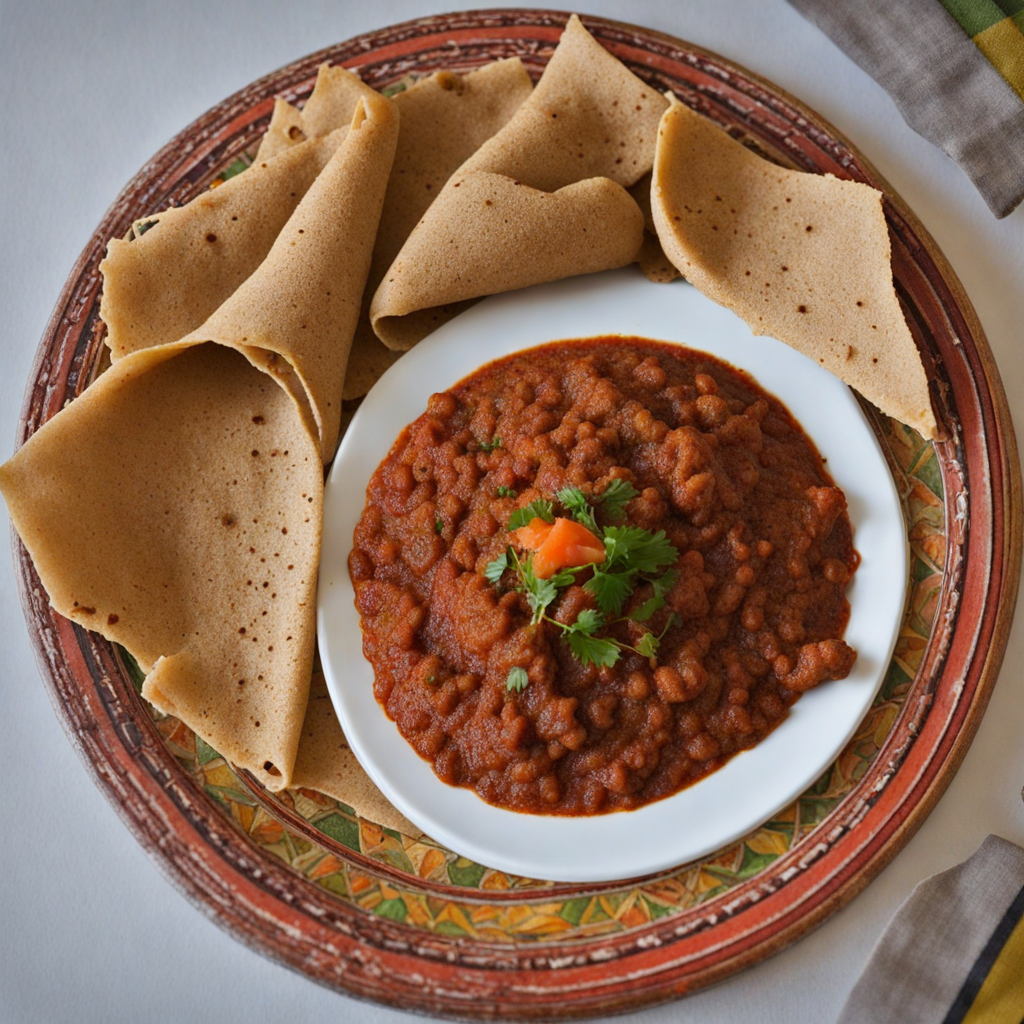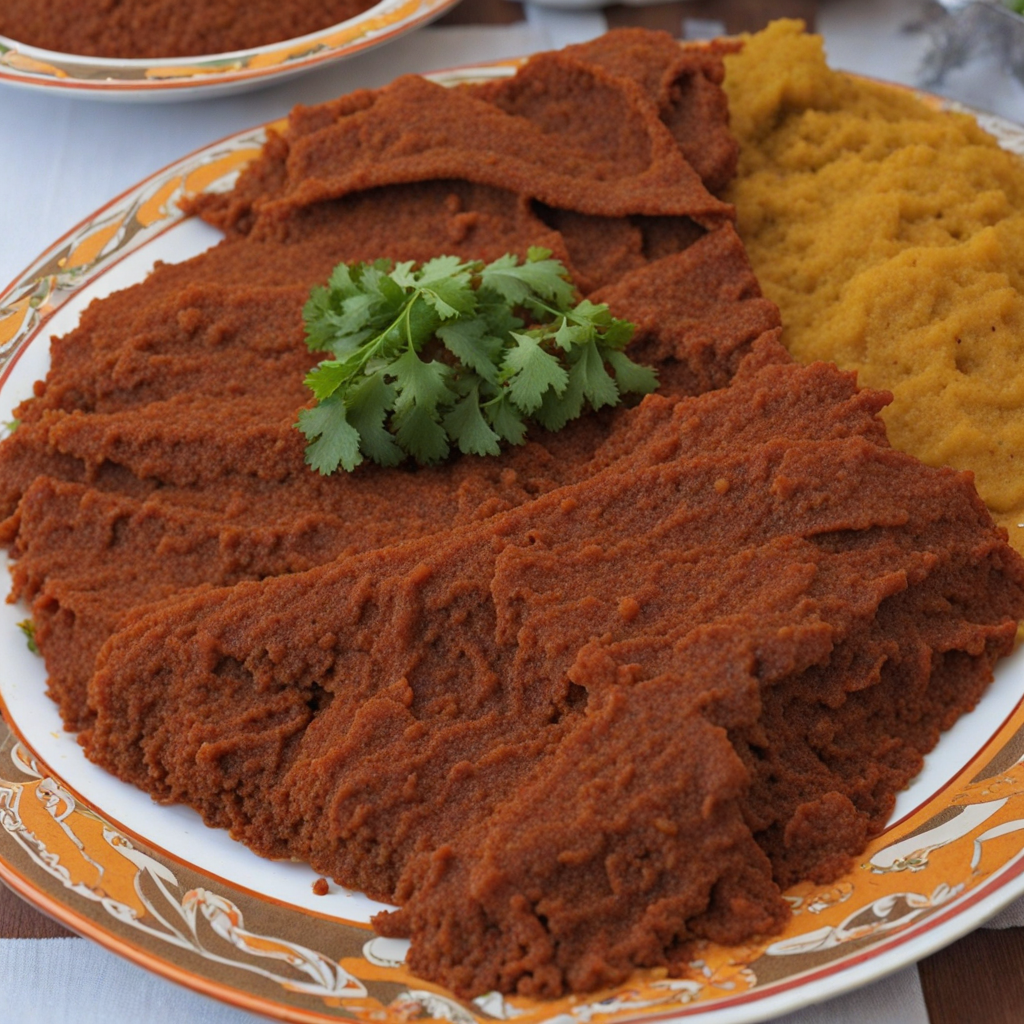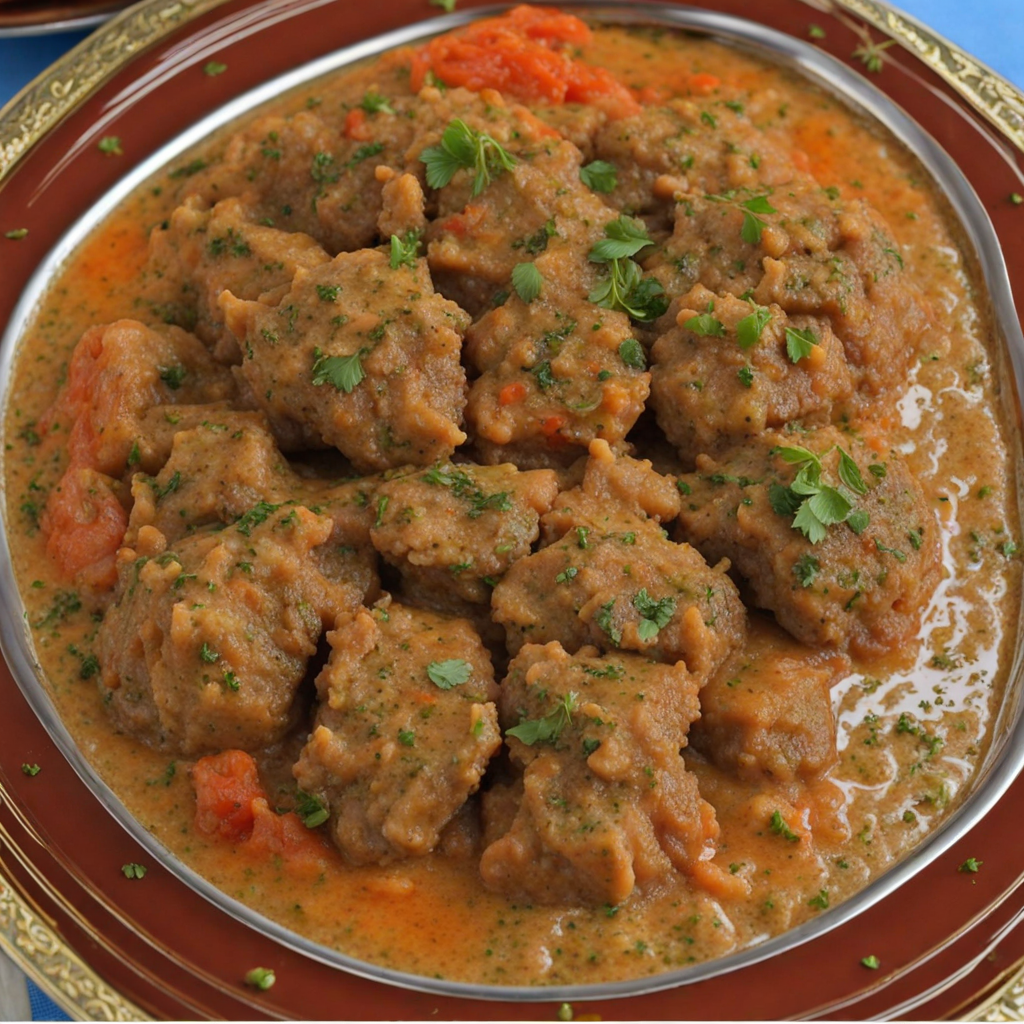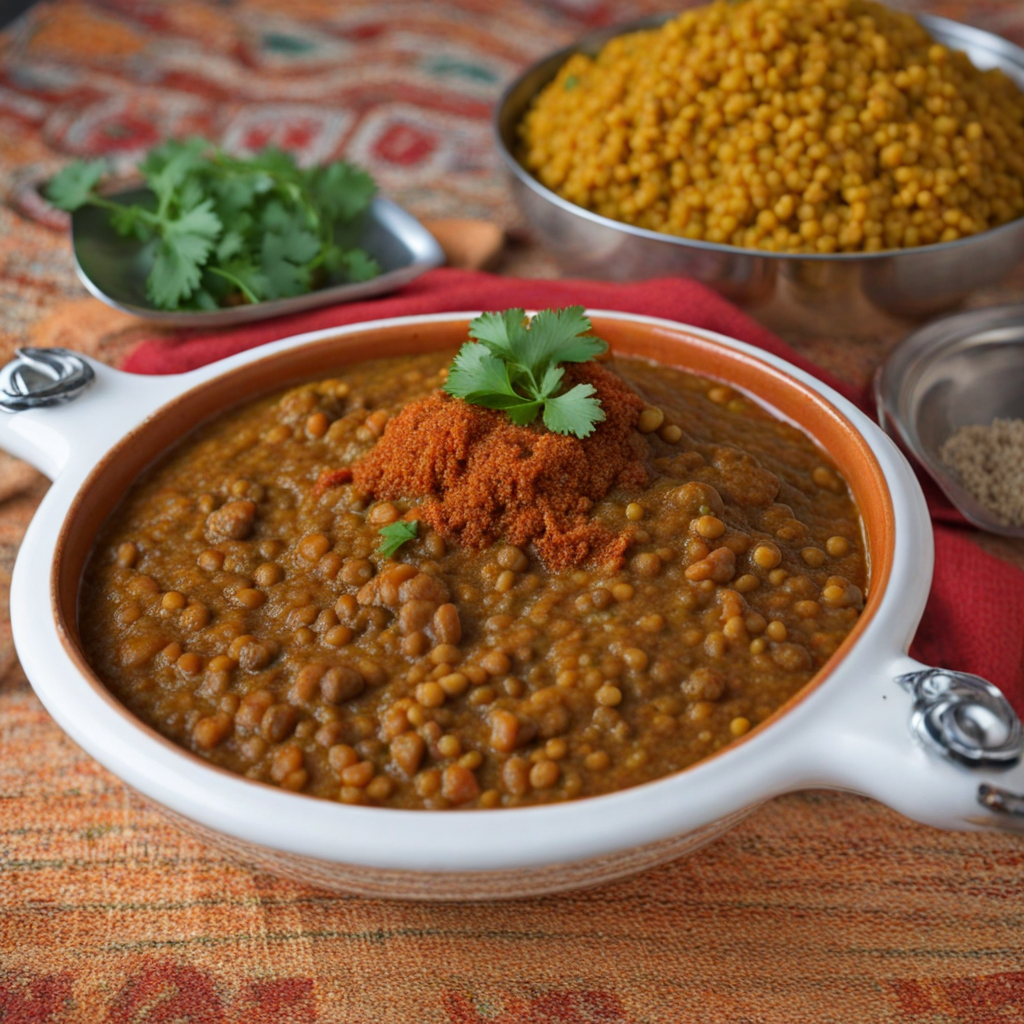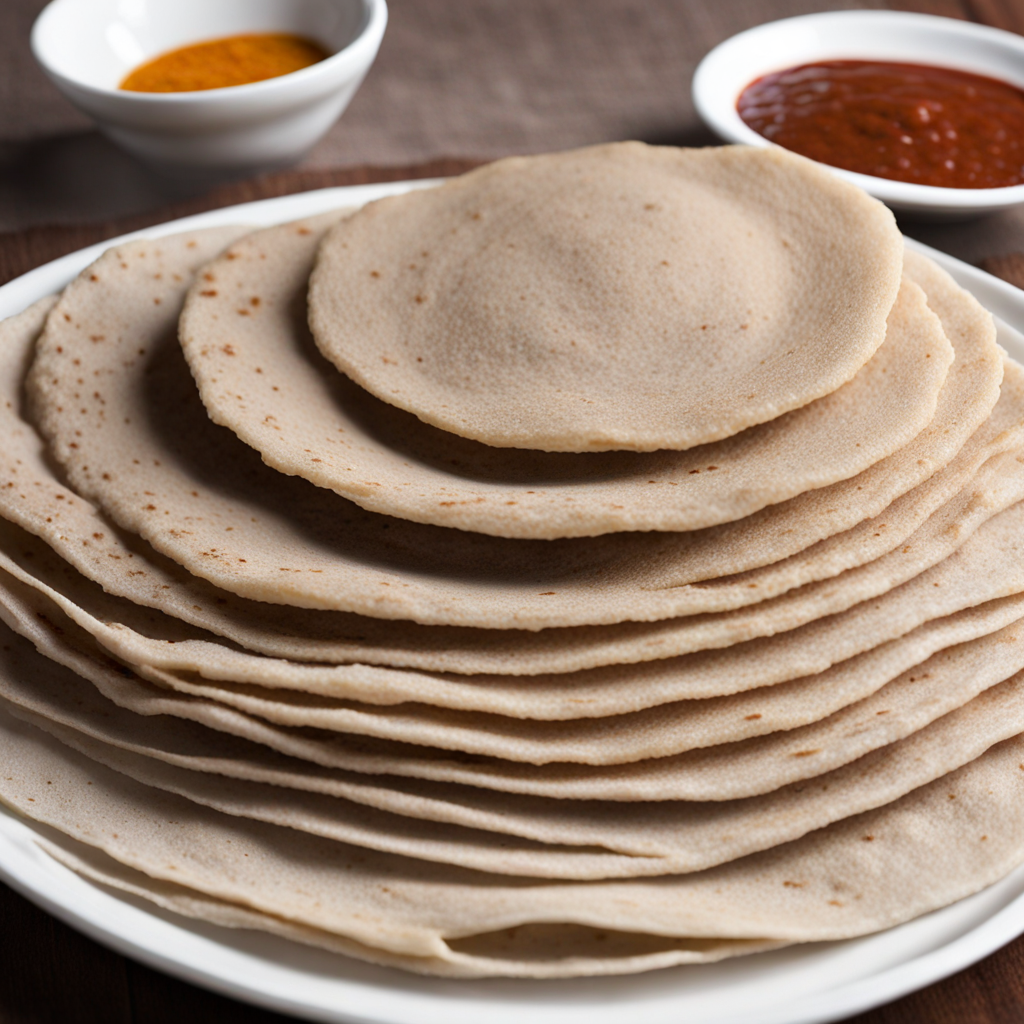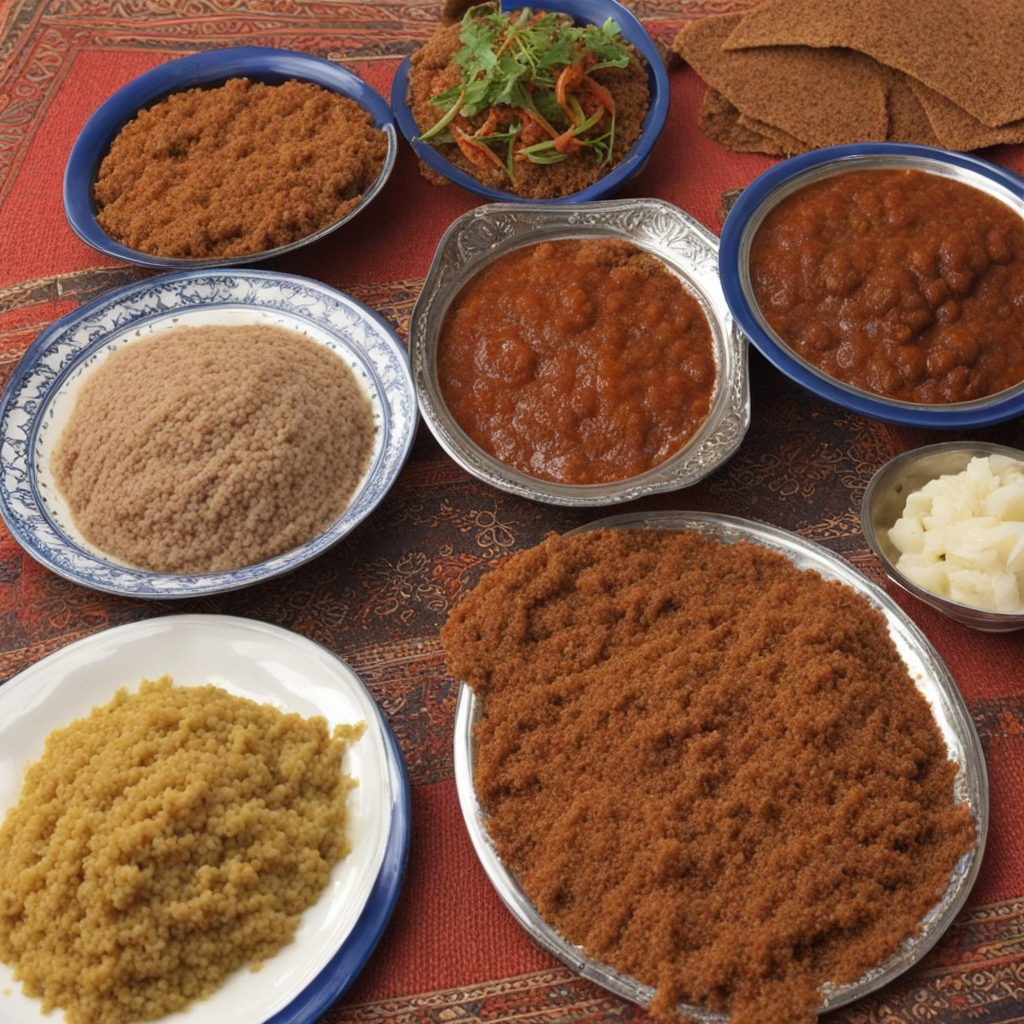Firfir
Firfir is a delightful and savory dish hailing from Eritrea, characterized by its robust flavors and unique texture. At its core, Firfir typically consists of shredded pieces of injera, a traditional Ethiopian flatbread made from teff flour. This bread serves as the base, absorbing the rich flavors of the accompanying sauces and spices. The dish is often prepared with a variety of ingredients, including sautéed onions, tomatoes, and a mix of spices such as berbere, which infuses it with a warm, aromatic heat. The combination of soft, tangy injera with the hearty, spiced sauce creates a comforting and satisfying meal that is both filling and flavorful. What sets Firfir apart is its versatility; it can be made with different proteins, such as minced beef, chicken, or lentils, allowing for a range of tastes and textures. Each variation brings its own unique twist to the dish while maintaining the signature taste that Firfir is known for. The use of fresh herbs like cilantro or parsley as a garnish adds a burst of freshness, enhancing the overall experience. The dish is often served alongside more injera, which is used to scoop up the Firfir, making it a communal and engaging meal that invites sharing and enjoyment among friends and family. Eating Firfir is not just a culinary experience; it is a journey into Eritrean culture and hospitality. The dish is commonly enjoyed during family gatherings or festive occasions, symbolizing warmth and togetherness. As you delve into the flavors of Firfir, you’ll discover the intricate balance of spice, tang, and texture that defines Eritrean cuisine. Whether you’re a fan of spicy dishes or looking to explore new culinary horizons, Firfir promises to be a memorable addition to your food adventures.
How It Became This Dish
The History of ፍርፍር (Firfir) in Eritrean Cuisine #### Origins Firfir is a beloved dish in Eritrea, characterized by its unique combination of flavors and textures. The dish primarily consists of shredded injera—Eritrea's staple fermented flatbread, made from teff flour—tossed with spicy sauces, often including berbere, a traditional spice mix that is a cornerstone of Eritrean and Ethiopian cuisine. The origins of firfir are deeply rooted in the culinary practices of the Eritrean people and reflect their agricultural heritage and cultural identity. Injera has been a staple in the Horn of Africa for centuries, with evidence suggesting its consumption dates back to ancient times. The etymology of the word "injera" is derived from the Ge'ez language, which is tied to the ancient civilizations that flourished in the region. As a versatile and nutritious bread, injera serves not only as a food item but also as a communal plate, where various stews and dishes are served atop it, allowing for an interactive dining experience that strengthens social bonds. Firfir likely emerged as an inventive way to repurpose leftover injera, a common practice in many cultures that emphasizes resourcefulness in cooking. Instead of discarding stale or leftover injera, households began shredding it and mixing it with flavorful sauces and spices, creating a dish that is both economical and delicious. This practice resonates with the broader themes of Eritrean cuisine, which often emphasizes the use of local ingredients, sustainability, and the importance of family and community in meal preparation. #### Cultural Significance Firfir holds a special place in Eritrean culture, serving not only as a source of nourishment but also as a symbol of hospitality and togetherness. In many Eritrean households, meals are communal affairs, with family and friends gathering around a shared platter. The act of eating firfir, with its vibrant colors and aromatic spices, embodies the spirit of togetherness that is integral to Eritrean social life. The dish is commonly prepared for breakfast, where it is often paired with a cup of traditional coffee or tea. Coffee in Eritrea is not merely a beverage but a ritual that involves the preparation and serving of coffee in a ceremonial manner. This ritual underscores the importance of hospitality in Eritrean culture, as families and friends gather to share stories, laughter, and meals. In this context, firfir becomes more than just a dish; it serves as a medium for connection and community bonding. Moreover, firfir reflects the diverse influences that have shaped Eritrean cuisine over the years, including Italian, Turkish, and various indigenous culinary traditions. The Italian occupation of Eritrea from the late 19th century to the mid-20th century introduced new cooking techniques, ingredients, and flavors, which have been integrated into the local diet. The adaptation of firfir, incorporating elements from these influences while maintaining its traditional roots, showcases the resilience and creativity of Eritrean cooks. #### Development Over Time As Eritrea gained independence from Ethiopia in 1993, the culinary landscape began to evolve with a renewed sense of national pride. Eritreans sought to reclaim and celebrate their culinary heritage, and dishes like firfir became emblematic of this cultural renaissance. The revival of traditional recipes and cooking methods has led to a growing appreciation for Eritrean cuisine both locally and internationally. In recent years, firfir has garnered attention beyond Eritrea's borders, thanks in part to the global interest in diverse culinary traditions. Eritrean restaurants have begun to pop up in various cities worldwide, offering dishes like firfir to a broader audience. This exposure has contributed to a growing awareness of Eritrean culture and cuisine, allowing people from different backgrounds to experience the rich flavors and communal aspects of the Eritrean dining experience. In contemporary Eritrean kitchens, firfir has also seen variations that cater to modern tastes and dietary preferences. For instance, while the traditional version typically features a spicy sauce made with berbere, variations may include different proteins such as chicken, beef, or lentils, making it adaptable to both vegetarian and non-vegetarian diets. This flexibility reflects the ongoing evolution of Eritrean cuisine, as families continue to innovate while honoring their culinary traditions. The digital age has further facilitated the spread of Eritrean recipes, including firfir, through social media platforms and food blogs. Home cooks and professional chefs alike share their interpretations and preparation methods, fostering a sense of community among those who cherish Eritrean food. Online cooking classes and tutorial videos have also made it easier for individuals to learn how to make firfir, bridging the gap between generations and ensuring that these culinary traditions endure. #### Conclusion Firfir is more than just a dish; it is a vibrant representation of Eritrea's rich culinary heritage, cultural identity, and communal values. Its origins reflect a resourceful approach to cooking, while its cultural significance underscores the importance of togetherness in Eritrean society. Over time, firfir has adapted to modern tastes while remaining a beloved staple that connects generations of Eritreans to their roots. As Eritrean cuisine continues to gain recognition on the global stage, firfir stands out as an ambassador of its rich flavors and traditions. Whether enjoyed in an Eritrean household or at a restaurant thousands of miles away, firfir embodies the essence of Eritrean hospitality and the enduring legacy of a culture deeply connected to its food. Thus, the story of firfir is a testament to the resilience of culinary traditions and the power of food to unite people across different backgrounds and experiences.
You may like
Discover local flavors from Eritrea


